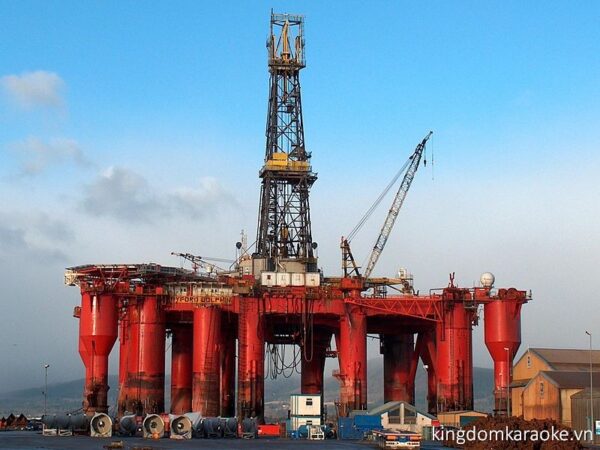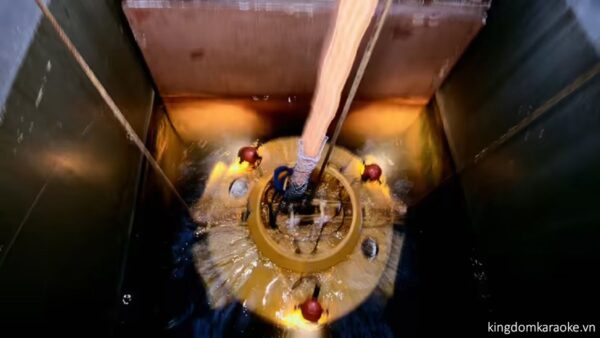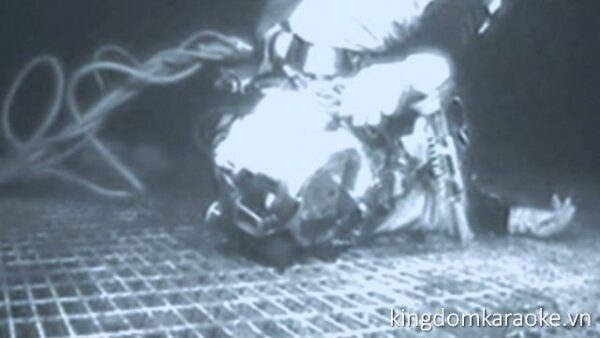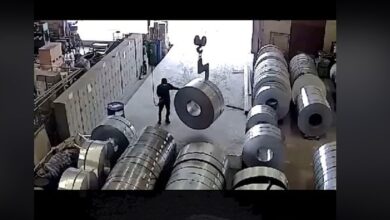The Byford Dolphin Accident Footage: A Tragic Incident in Offshore Drilling

The Byford Dolphin accident serves as a stark reminder of the dangers faced in offshore drilling. Occurring on April 5, 1983, this incident resulted in multiple fatalities and highlighted the need for improved safety measures. Owned by Dolphin Drilling, the drilling rig experienced a catastrophic failure during maintenance work. In this article, we will explore the causes, impact, and enduring lessons learned from this tragic event, emphasizing the importance of safety in offshore drilling operations. Keep reading on Kingdomkaraoke.vn.
I. Overview of the Byford Dolphin.
The Byford Dolphin was a semi-submersible drilling rig that played a significant role in offshore drilling operations. Owned by the Norwegian company Dolphin Drilling, it was designed for deep-sea exploration and drilling in various locations around the world.

The rig featured a semi-submersible platform that provided stability and allowed for drilling in harsh offshore environments. It had a towering structure with multiple decks, housing drilling equipment, living quarters for crew members, and support facilities.
With its advanced capabilities, the Byford Dolphin was involved in exploratory drilling, well maintenance, and development projects in the North Sea and other offshore regions. The rig played a crucial role in extracting valuable resources from beneath the ocean floor, contributing to the energy industry’s operations and supply chain.
Equipped with state-of-the-art drilling technology and a skilled crew, the Byford Dolphin was a key asset in Dolphin Drilling’s fleet and contributed to the company’s reputation as a leading player in the offshore drilling sector.
Despite its notable contributions, the Byford Dolphin became tragically associated with the accident that occurred on April 5, 1983, casting a shadow over its operational history and highlighting the importance of safety measures in offshore drilling.
II. Description of The Byford Dolphin Accident.
The Byford Dolphin accident unfolded on April 5, 1983, during a maintenance and repair operation on the drilling rig in the North Sea. At the time of the incident, four divers were working inside a diving bell, which was being used for underwater tasks such as maintenance, inspections, and repairs.


Suddenly, a catastrophic failure occurred within the diving bell’s chamber door. This failure resulted in a rapid and violent decompression event, causing a significant loss of pressure inside the bell. As a result, the four divers inside the bell were forcefully expelled from the chamber.
Tragically, three of the divers lost their lives instantly due to the extreme conditions of the decompression. The bodies of these divers were unable to be recovered. The fourth diver survived but sustained severe injuries as a result of the accident.
The accident sent shockwaves through the offshore drilling industry due to its sudden and devastating nature. It brought to light the critical importance of maintaining and ensuring the structural integrity of equipment, particularly in high-pressure environments such as underwater diving bells.
Investigations following the accident revealed that the failure of the chamber door was caused by an incorrect installation of bolts, which compromised the structural strength of the door. This error led to the door’s inability to withstand the pressure differentials experienced during the incident.
The Byford Dolphin accident serves as a tragic reminder of the risks associated with offshore drilling operations and the vital need for rigorous adherence to safety protocols, equipment maintenance, and inspections to prevent similar incidents in the future.
III. Investigation and Causes of The Byford Dolphin Accident.
Following the Byford Dolphin accident, a thorough investigation was conducted to determine the causes of the tragic incident. The investigation aimed to shed light on the factors that led to the failure of the diving bell’s chamber door and the subsequent decompression.
The investigation revealed that the primary cause of the accident was a failure in the construction and installation of the chamber door. It was discovered that a series of bolts, crucial for maintaining the structural integrity of the door, had been incorrectly installed.
The incorrect installation of the bolts weakened the door’s overall strength, making it unable to withstand the high-pressure differentials experienced during the decompression event. As a result, the door failed catastrophically, leading to the violent expulsion of the divers from the chamber.
The investigation highlighted the critical importance of proper construction and installation procedures when it comes to equipment used in high-pressure environments like diving bells. It emphasized the need for meticulous attention to detail and adherence to industry standards and best practices during the manufacturing and assembly processes.
Furthermore, the investigation revealed potential shortcomings in the inspection and quality control procedures, which might have allowed the incorrect installation of the bolts to go unnoticed.
The findings of the investigation prompted significant changes in safety regulations and practices within the offshore drilling industry. Stricter guidelines were established to ensure the proper construction, maintenance, and inspection of equipment involved in underwater operations.
The Byford Dolphin accident stands as a sobering reminder of the severe consequences that can arise from even the slightest errors in equipment construction and installation. It serves as a catalyst for continuous improvement in safety standards, protocols, and oversight in the offshore drilling industry, with the aim of preventing similar incidents in the future.
IV. Impact and Lessons Learned from The Byford Dolphin Accident
The Byford Dolphin accident had a profound impact on the offshore drilling industry, leading to significant changes in safety practices and regulations. The incident served as a wake-up call, highlighting the need for improved safety measures and increased awareness of the potential risks associated with offshore drilling operations.
- Industry-wide Safety Improvements: The accident prompted a comprehensive reassessment of safety protocols and practices within the offshore drilling industry. Stricter regulations were implemented, focusing on equipment maintenance, inspection procedures, and adherence to safety standards. The incident served as a catalyst for enhanced safety training and awareness among workers and reinforced the importance of continuous improvement in safety measures.
- Emphasis on Proper Equipment Installation and Maintenance: The incorrect installation of bolts in the Byford Dolphin’s diving bell chamber door underscored the criticality of meticulous construction and installation procedures. It highlighted the necessity of thorough quality control and inspection processes to ensure the structural integrity of equipment. This lesson led to enhanced scrutiny of equipment manufacturing, assembly, and maintenance practices across the industry.
- Heightened Focus on Risk Assessment and Management: The accident emphasized the need for robust risk assessment and management strategies in offshore drilling operations. It underscored the importance of identifying potential hazards, implementing preventive measures, and having contingency plans in place. The incident served as a reminder that safety should be a top priority at all stages of drilling operations, from planning and execution to emergency response.
- Improved Communication and Reporting: The Byford Dolphin accident highlighted the significance of effective communication and reporting systems within drilling operations. It emphasized the importance of clear and concise communication between workers, supervisors, and management to ensure timely response to safety concerns and effective coordination during emergencies.
- Legacy of Safety Consciousness: The tragic nature of the Byford Dolphin accident left a lasting legacy of safety consciousness within the offshore drilling industry. It serves as a constant reminder of the potential risks involved and the responsibility to prioritize safety in all aspects of operations. The incident continues to influence safety culture, shaping best practices, and driving ongoing efforts to mitigate risks and enhance safety measures.
The Byford Dolphin accident, while devastating, played a pivotal role in catalyzing safety improvements in the offshore drilling industry. Through the lessons learned from this tragic event, steps have been taken to prevent similar incidents, safeguard workers, and ensure the sustainable development of offshore energy resources.









